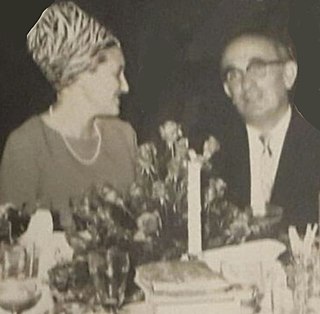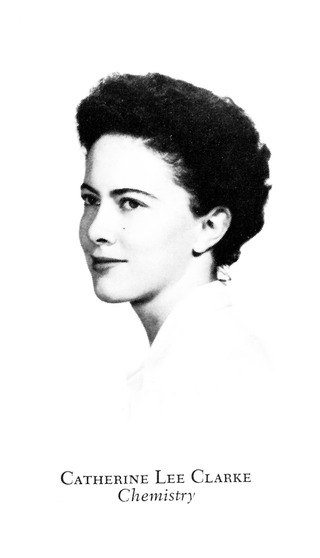Related Research Articles

Norman Hackerman was an American chemist, professor, and academic administrator who served as the 18th President of the University of Texas at Austin (1967–1970) and later as the 4th President of Rice University (1970–1985). He was an internationally known expert in metal corrosion.

Edward Witten is an American theoretical physicist known for his contributions to string theory, topological quantum field theory, and various areas of mathematics. He is a professor emeritus in the school of natural sciences at the Institute for Advanced Study in Princeton. Witten is a researcher in string theory, quantum gravity, supersymmetric quantum field theories, and other areas of mathematical physics. Witten's work has also significantly impacted pure mathematics. In 1990, he became the first physicist to be awarded a Fields Medal by the International Mathematical Union, for his mathematical insights in physics, such as his 1981 proof of the positive energy theorem in general relativity, and his interpretation of the Jones invariants of knots as Feynman integrals. He is considered the practical founder of M-theory.

Gerhard Heinrich Friedrich Otto Julius Herzberg, was a German-Canadian pioneering physicist and physical chemist, who won the Nobel Prize for Chemistry in 1971, "for his contributions to the knowledge of electronic structure and geometry of molecules, particularly free radicals". Herzberg's main work concerned atomic and molecular spectroscopy. He is well known for using these techniques that determine the structures of diatomic and polyatomic molecules, including free radicals which are difficult to investigate in any other way, and for the chemical analysis of astronomical objects. Herzberg served as Chancellor of Carleton University in Ottawa, Canada from 1973 to 1980.

Rudolph Arthur Marcus is a Canadian-born American chemist who received the 1992 Nobel Prize in Chemistry "for his contributions to the theory of electron transfer reactions in chemical systems". Marcus theory, named after him, provides a thermodynamic and kinetic framework for describing one electron outer-sphere electron transfer. He is a professor at Caltech, Nanyang Technological University, Singapore and a member of the International Academy of Quantum Molecular Science.

The Weizmann Institute of Science is a public research university in Rehovot, Israel, established in 1934, fourteen years before the State of Israel was founded. Unlike other Israeli universities it exclusively offers postgraduate-only degrees in the natural and exact sciences.
Louis Witten is an American theoretical physicist and the father of the physicist Edward Witten. Witten's research has centered on classical gravitation, including the discovery of certain exact electrovacuum solutions to the Einstein field equation.

Alfred Robert Bader was a Canadian chemist, businessman, philanthropist, and collector of fine art. He was considered by the Chemical & Engineering News poll of 1998 to be one of the "Top 75 Distinguished Contributors to the Chemical Enterprise" during C&EN's 75-year history.
Michael Ellis Fisher was an English physicist, as well as chemist and mathematician, known for his many seminal contributions to statistical physics, including but not restricted to the theory of phase transitions and critical phenomena. He was the Horace White Professor of Chemistry, Physics, and Mathematics at Cornell University. Later he moved to the University of Maryland College of Computer, Mathematical, and Natural Sciences, where he was University System of Maryland Regents Professor, a Distinguished University Professor and Distinguished Scholar-Teacher.

Martin Karplus was an Austrian and American theoretical chemist. He was the Theodore William Richards Professor of Chemistry at Harvard University. He was also the director of the Biophysical Chemistry Laboratory, a joint laboratory between the French National Center for Scientific Research and the University of Strasbourg, France. Karplus received the 2013 Nobel Prize in Chemistry, together with Michael Levitt and Arieh Warshel, for "the development of multiscale models for complex chemical systems".
Gilbert Stork was a Belgian-American organic chemist. For a quarter of a century he was the Eugene Higgins Professor of Chemistry Emeritus at Columbia University. He is known for making significant contributions to the total synthesis of natural products, including a lifelong fascination with the synthesis of quinine. In so doing he also made a number of contributions to mechanistic understanding of reactions, and performed pioneering work on enamine chemistry, leading to development of the Stork enamine alkylation. It is believed he was responsible for the first planned stereocontrolled synthesis as well as the first natural product to be synthesised with high stereoselectivity.

Anna Jane Harrison was an American organic chemist and a professor of chemistry at Mount Holyoke College for nearly forty years. She was the first female president of the American Chemical Society, and the recipient of twenty honorary degrees. She was nationally known for her teaching and was active nationally and internationally as a supporter of women in science.

Herman Francis Mark was an Austrian-American chemist regarded for his contributions to the development of polymer science. Mark's X-ray diffraction work on the molecular structure of fibers provided important evidence for the macromolecular theory of polymer structure. Together with Houwink he formulated an equation, now called the Mark–Houwink or Mark–Houwink–Sakurada equation, describing the dependence of the intrinsic viscosity of a polymer on its relative molecular mass. He was a long-time faculty at Polytechnic Institute of Brooklyn. In 1946, he established the Journal of Polymer Science.
Carl Shipp "Speed" Marvel was an American chemist who specialized in polymer chemistry. He made important contributions to U.S. synthetic rubber program during World War II, and later worked at developing polybenzimidazoles, temperature-resistant polymers that are used in the aerospace industry, in fire-fighting equipment, and as a replacement for asbestos. He has been described as "one of the world's outstanding organic chemists" and received numerous awards, including the 1956 Priestley Medal and the 1986 National Medal of Science, presented by President Ronald Reagan.
William Albert Noyes Jr., commonly known as W. Albert Noyes Jr., was an American chemist known for his contributions to photochemistry. During World War II, he was a leader in U.S. defense research efforts. He chaired the chemistry department at the University of Rochester, edited several important chemistry journals, and throughout his career was a prominent voice for international scientific cooperation. He was the son of the renowned chemist William A. Noyes; they became the first father-son pair to win the Priestley Medal, the highest honor given by the American Chemical Society.

Dr. Samuel Soloveichik was an Orthodox Jewish chemist and talmudist.

Catherine Clarke Fenselau is an American scientist who was the first trained mass spectrometrist on the faculty of an American medical school; she joined Johns Hopkins School of Medicine in 1968. She specializes in biomedical applications of mass spectrometry. She has been recognized as an outstanding scientist in the field of bioanalytical chemistry because of her work using mass spectrometry to study biomolecules.

James Flack Norris was an American chemist.
Govindasamy Mugesh is an Indian inorganic and physical chemist, a professor and the head of the Mugesh Laboratory attached to the department of Inorganic and Physical Chemistry at the Indian Institute of Science. He is known for his studies on the mechanism of thyroid hormone action and is an elected fellow of the Indian Academy of Sciences, Indian National Science Academy, Royal Society of Chemistry and the National Academy of Sciences, India. The Council of Scientific and Industrial Research, the apex agency of the Government of India for scientific research, awarded him the Shanti Swarup Bhatnagar Prize for Science and Technology, one of the highest Indian science awards, in 2012, for his contributions to chemical sciences. In 2019, he was awarded the Infosys Prize in Physical Sciences for his seminal work in the chemical synthesis of small molecules and nanomaterials for biomedical applications.

John Drake Hoffman was an American chemist and author who was awarded the Soldier's Medal, the United States Army's highest award for an act of valor in a non-combat situation, and the only one awarded to a member of the Manhattan District. After the war he worked for the National Bureau of Standards, becoming the director of its national measurements laboratory. He was a professor and director of the engineering materials program at the University of Maryland from 1982 to 1985, director of the Michigan Molecular Institute, and a professor of materials science and engineering at Johns Hopkins University.

Karel František Wiesner was a Canadian chemist of Czech origin known for his contributions to the chemistry of natural products, notably aconitum alkaloids and digitalis glycosides.
References
- ↑ "People In The News". The Aegis (Bel Air) . June 9, 1960. pp. B4.
- ↑ "A Finding Aid to the Benjamin Witten Papers. 1916-1976". collections.americanjewisharchives.org. Retrieved 2025-01-17.
- ↑ "Maryland Chemist of the Year – The Maryland Section of the American Chemical Society" . Retrieved 2025-01-17.
- ↑ "4 Scientists Win SARS Fellowships at Overseas Universities" (PDF). Army Research and Development. 7 (4): 12–13. April 1966.